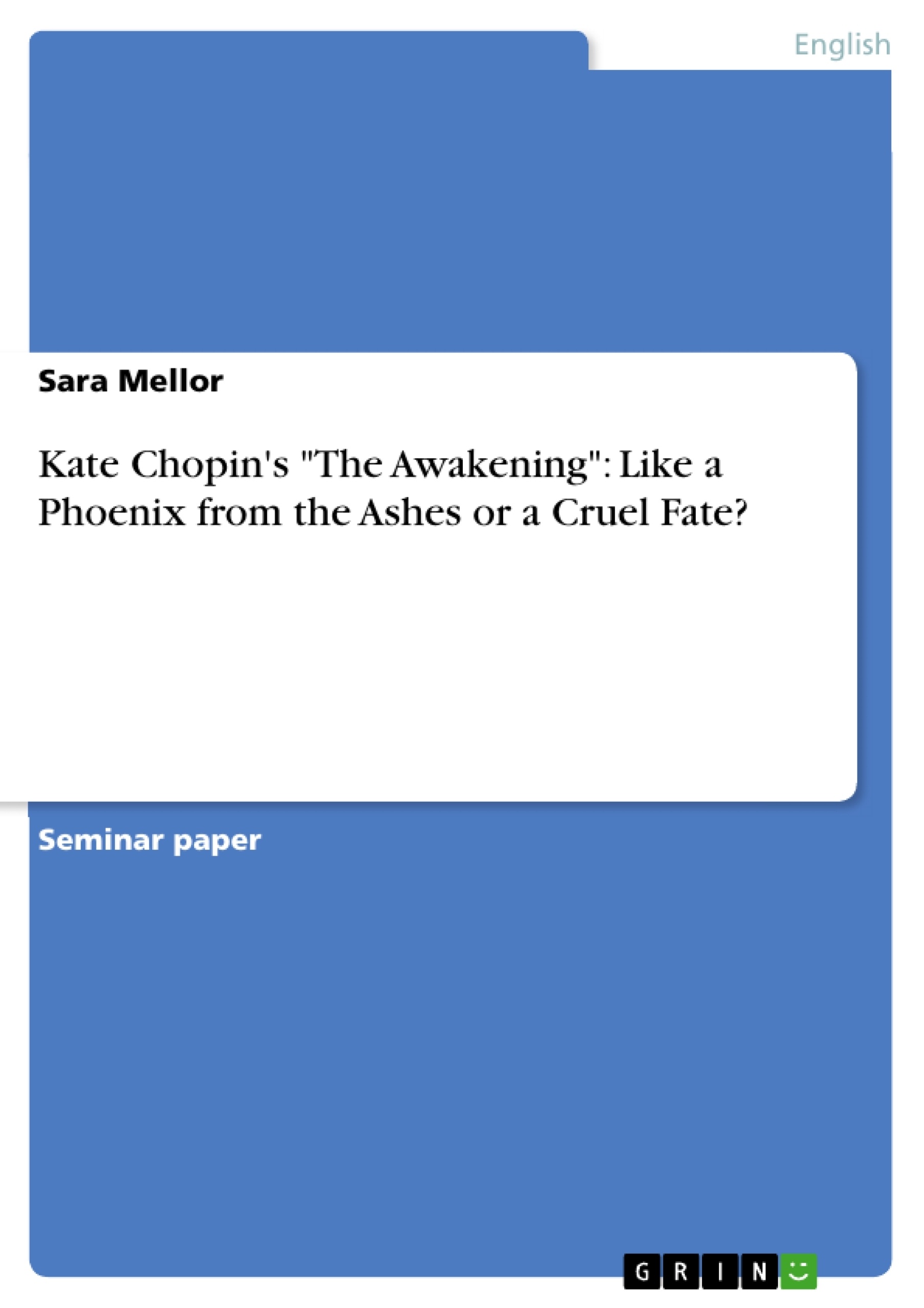Diese Hausarbeit ist zu Kate Chopins Meisterwerk "The Awakening". Es geht um den weiblichen Hauptcharakter Edna Pontellier und ihre Entwicklung von True Womanhood zu New Womanhood und den vermeintlichen Erfolg dieser Entwicklung.
Es ist eine Arbeit die aufgrund der Literatur erstellt wurde und nah am Werk selbst arbeitet, damit durch zahlreiche Zitate gestützt ist.
Analysen ihrer verschiedenen Freund- und Liebschaften spielen dabei eine Rolle, genauso wie die tiefliegende Symbolik (Orte, Nebencharaktere etc.) die sich stringent durch das gesamte Werk zieht und hier näher beleuchtet wird.
Table of Contents
I. Introduction
II. A Characterisation of Edna Pontellier
III. The Setting – Grand Isle and New Orleans
IV. Edna Pontellier – New Womanhood or True Womanhood?
V. Awakening through Art
VI. Awakening of Love or Passion?
VII. The Suicide
VIII. Conclusion
IX. Bibliography
-

-

-

-
Upload your own papers! Earn money and win an iPhone X. -

-
Upload your own papers! Earn money and win an iPhone X. -

-
Upload your own papers! Earn money and win an iPhone X. -

-
Upload your own papers! Earn money and win an iPhone X. -

-
Upload your own papers! Earn money and win an iPhone X. -

-
Upload your own papers! Earn money and win an iPhone X. -

-
Upload your own papers! Earn money and win an iPhone X.

